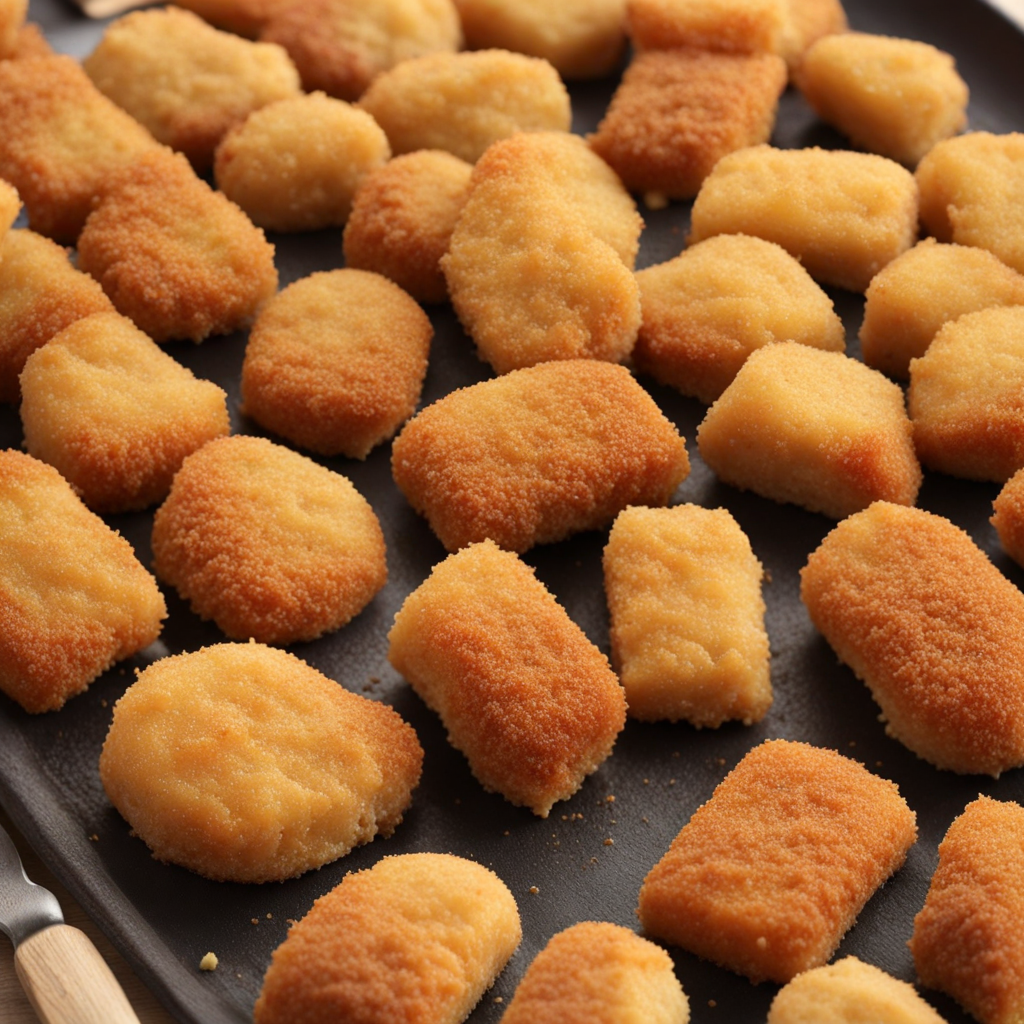Rántott Sajt
Rántott Sajt is a delectable Hungarian dish that showcases the country's love for comfort food. This dish consists of cheese, typically a mild variety such as Edam or a similar semi-hard cheese, which is coated in a crispy breading. The cheese is first sliced into thick pieces, then dipped in flour, followed by beaten eggs, and finally coated with breadcrumbs. When fried, the breading becomes golden brown and crunchy, while the cheese inside melts to a luscious, gooey consistency that is simply irresistible. The flavor profile of Rántott Sajt is a delightful combination of savory and creamy notes, enhanced by the crunchy exterior. Each bite offers a satisfying contrast between the crispiness of the fried coating and the rich, warm cheese within. This dish is often served with a side of tartar sauce or a fresh salad, which adds a refreshing balance to the richness of the cheese. The simplicity of the ingredients allows the natural flavors to shine, making it a favorite among locals and visitors alike. Rántott Sajt is often enjoyed as a snack or appetizer, and it's a popular choice in Hungarian restaurants and street food stalls. It captures the essence of Hungarian cuisine—comforting, hearty, and absolutely delicious. Whether shared among friends or savored as a solo treat, this dish invites food lovers to experience a unique and satisfying taste of Hungary that is both familiar and wonderfully different.
How It Became This Dish
Rántott Sajt: A Deep Dive into Hungary’s Golden Fried Cheese #### Introduction Rántott sajt, or "fried cheese," is a beloved Hungarian dish that embodies the heart and soul of the country's culinary traditions. This enticing comfort food, often enjoyed as a snack or a main dish, features a deliciously crisp exterior that encases a gooey and savory cheese interior. With its roots deeply embedded in Hungarian culture, the history of rántott sajt reflects a fascinating blend of local ingredients, culinary techniques, and social customs. #### Origins The origins of rántott sajt can be traced back to the broader European tradition of frying cheese, which has been a common practice in various cultures for centuries. Cheese itself has been a staple food in Hungary since the time of the Magyar tribes, who settled in the Carpathian Basin around the 9th century. The abundance of dairy farming in Hungary led to a variety of cheeses being produced, including the well-known túró (cottage cheese), trappista (a type of semi-hard cheese), and others. The technique of breading and frying foods can be linked to the medieval era when cooks experimented with various preservation and cooking methods. In Hungary, frying food became popular due to the availability of lard and oil, which were ideal for achieving the crispy texture that is so cherished in dishes like rántott sajt. The dish likely evolved as a way to elevate simple cheese into a satisfying meal, making it a staple in households across the nation. #### Cultural Significance Rántott sajt holds a special place in Hungarian cuisine, often seen as a comfort food that evokes nostalgia and home. It is not merely a dish; it is part of a broader culinary experience. In Hungary, cheese is often enjoyed alongside bread, pickles, and wine, and rántott sajt fits seamlessly into this culinary framework. It is typically served with sides such as tartar sauce or a simple salad, enhancing the overall meal experience. The dish also plays a role in social gatherings and celebrations. It is commonly served at family gatherings, festivals, and fairs, where it can be enjoyed as a quick snack or a hearty meal. In many ways, rántott sajt represents the communal spirit of Hungarian dining, where food brings people together and creates lasting memories. #### Development Over Time As culinary traditions evolved, so too did the preparation of rántott sajt. The basic method of breading and frying cheese has remained consistent, but variations have emerged based on regional preferences and available ingredients. While the classic version features trappista cheese, other types of cheese, such as mozzarella or even blue cheese, have found their way into kitchens, allowing for experimentation and personalization. In the mid-20th century, during Hungary's socialist period, street food culture began to flourish. Rántott sajt became a popular offering at markets, fairs, and food stalls, making it widely accessible to the general public. The dish's affordability and satisfying nature made it an ideal choice for those looking for a quick yet hearty meal. This period also saw the dish gaining popularity in restaurants, where chefs began to refine their techniques, serving it with a variety of dips and sides, further enhancing its appeal. In recent decades, as globalization has influenced culinary practices around the world, rántott sajt has gained recognition beyond Hungary's borders. Hungarian expatriates and food enthusiasts have introduced the dish to new audiences, often serving it at cultural festivals and events. This has contributed to a resurgence of interest in traditional Hungarian cuisine, as well as a broader appreciation for the comfort foods of different cultures. #### Modern Interpretations Today, rántott sajt has firmly established itself in both traditional and modern Hungarian cuisine. In contemporary restaurants, chefs often take creative liberties, incorporating unique cheeses and innovative breading techniques. Some may add herbs or spices to the breading mixture, while others experiment with different frying methods, such as air frying or baking, in response to health-conscious trends. The dish is also embraced in the realm of vegetarian and vegan cooking. With the rise of plant-based diets, some chefs have begun to create vegan versions of rántott sajt using plant-based cheeses that mimic the texture and flavor of traditional cheese. This adaptation allows the dish to remain relevant in a changing culinary landscape while honoring its roots. #### Conclusion Rántott sajt is more than just a dish; it is a culinary emblem that represents the rich cultural heritage of Hungary. Its history reflects the evolution of traditional cooking methods, the importance of community and shared meals, and the adaptability of cuisine in a globalized world. Whether enjoyed at a bustling market stall, a family gathering, or a fine dining establishment, rántott sajt continues to bring joy to those who savor its crispy exterior and flavorful cheese center. As Hungary celebrates its culinary traditions, dishes like rántott sajt serve as reminders of the deep connections between food, culture, and identity. Every bite tells a story, one that is rooted in history yet continues to evolve, making it an enduring favorite for generations to come.
You may like
Discover local flavors from Hungary







